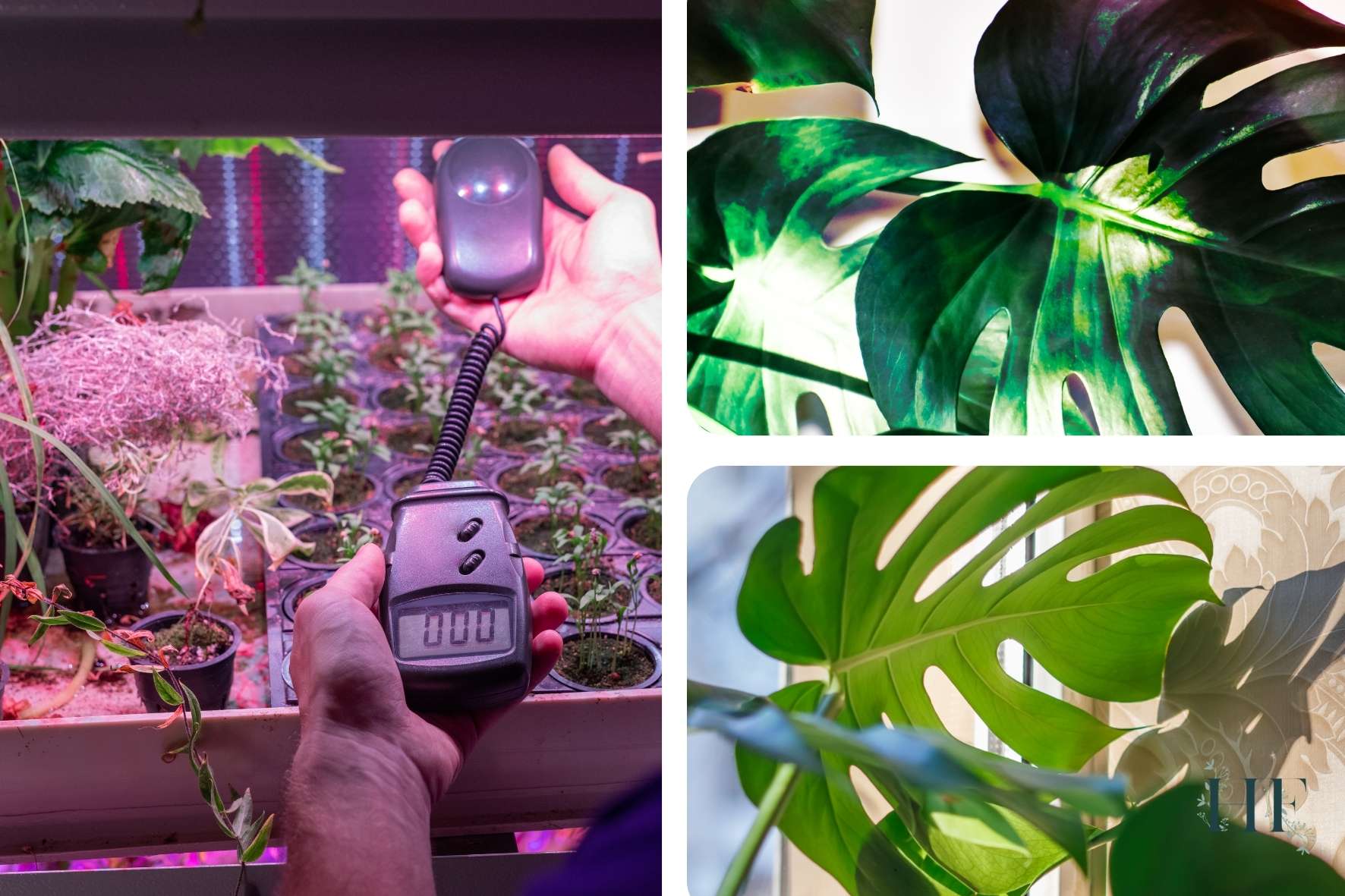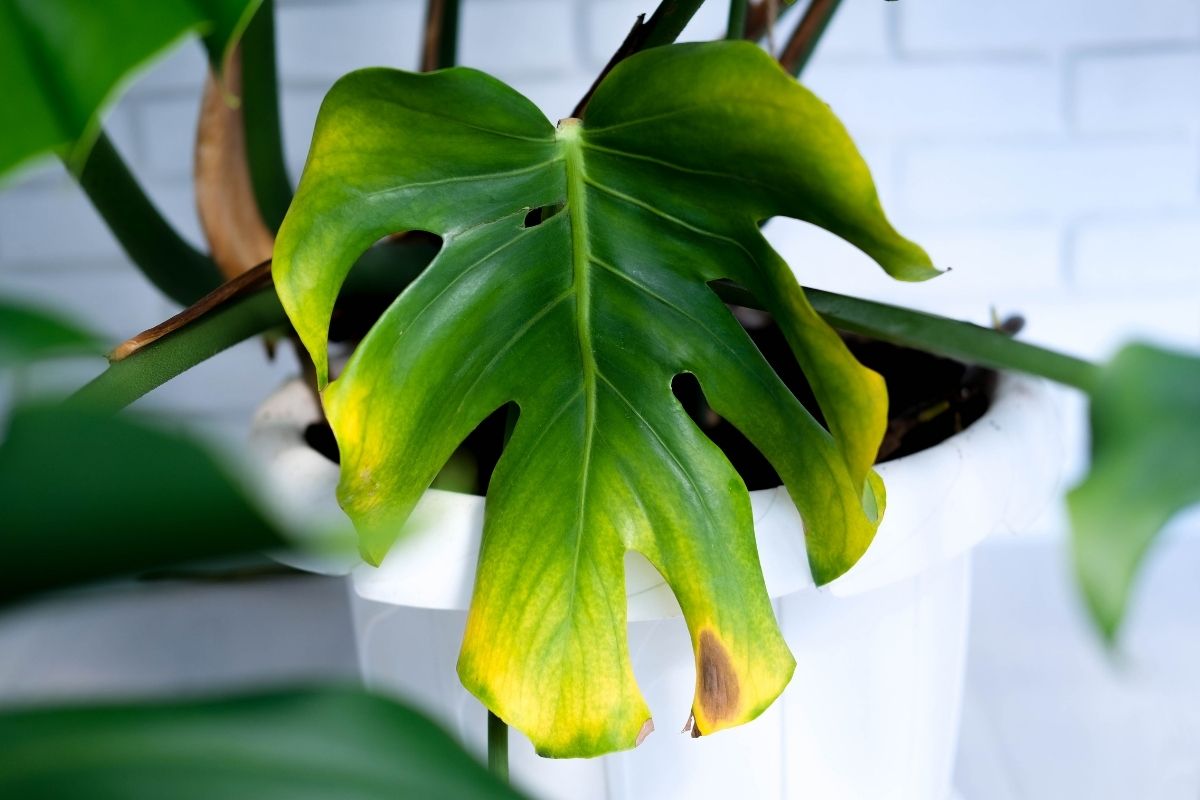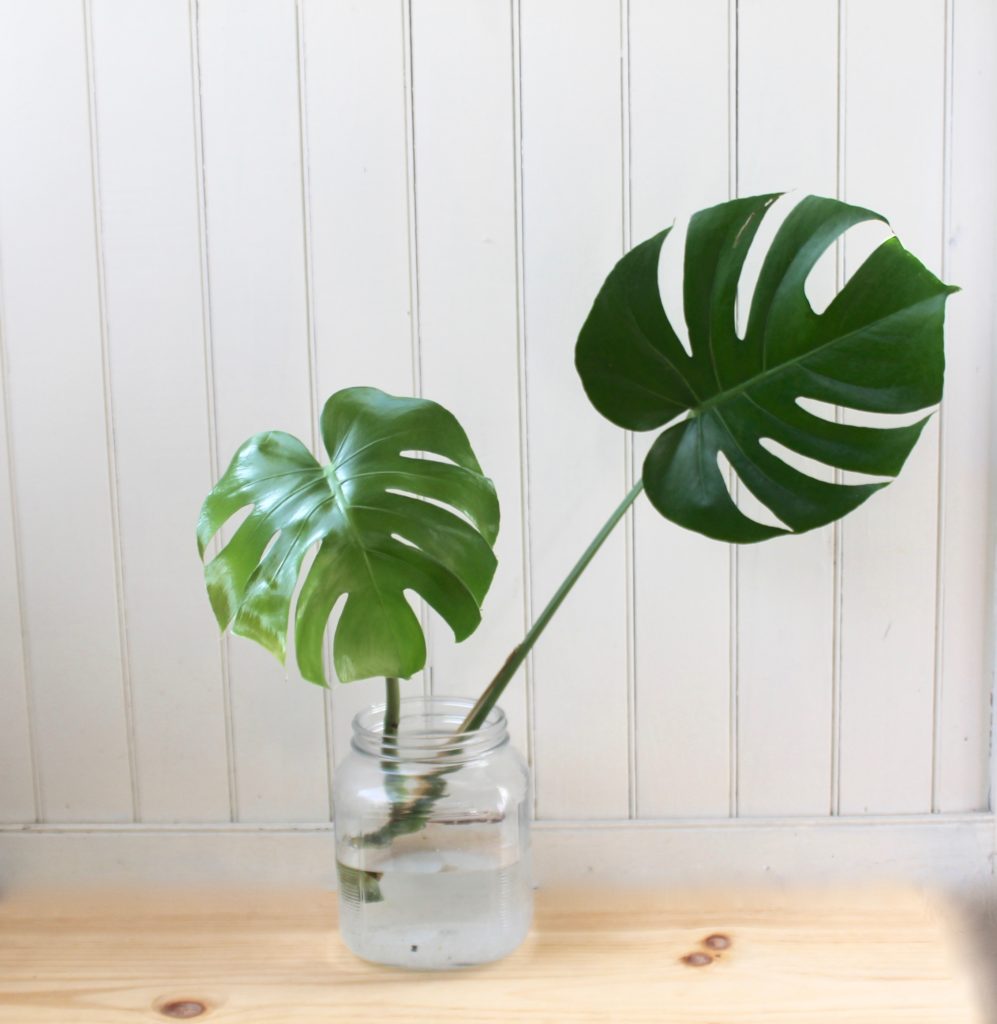Understanding Monstera Lighting Requirements
Lighting is one of the most critical factors in determining the health and well-being of your Monstera Deliciosa. Monsteras are native to the tropical regions of Central and South America, where they grow on the forest floor, receiving dappled light filtered through the trees. To replicate this environment, it’s essential to provide your Monstera with the right balance of light.
Direct light can be too intense for Monsteras, causing the leaves to become scorched and the plant to become stressed. On the other hand, indirect light is ideal, as it provides the necessary light for photosynthesis without causing damage to the plant. East- or west-facing windows are perfect for Monsteras, as they receive gentle, indirect light throughout the day.
To determine the best lighting conditions for your Monstera, observe the plant’s response to different light levels. If the leaves are becoming scorched or discolored, it may be receiving too much direct light. Conversely, if the plant is not receiving enough light, it may become leggy or stretched out. By adjusting the lighting conditions accordingly, you can ensure your Monstera receives the right amount of light to thrive.
Watering Your Monstera: The Art of Finding the Right Balance
Watering is a crucial aspect of Monstera care, and finding the right balance is essential to prevent overwatering and underwatering. Monsteras prefer well-draining soil and should be watered thoroughly, allowing the top 1-2 inches of soil to dry out between waterings. This will help prevent root rot and ensure the plant receives the right amount of moisture.
Overwatering is a common mistake that can lead to root rot, yellowing leaves, and a range of other problems. To avoid this, check the soil moisture by sticking your finger into the soil up to the first knuckle. If the soil feels dry, it’s time to water. If it’s already moist, wait a few more days before watering again.
Underwatering, on the other hand, can cause the leaves to become crispy and the plant to become stressed. To prevent this, make sure to water your Monstera regularly, especially during the spring and summer months when it’s actively growing.
When watering your Monstera, use room-temperature water and avoid getting water on the leaves to prevent fungal diseases. Water at the base of the plant, allowing the soil to absorb the moisture. This will help prevent overwatering and ensure the plant receives the right amount of moisture.
By finding the right balance and watering your Monstera correctly, you’ll be able to provide the right conditions for healthy growth and development. Remember, learning how to take care of a Monstera is all about observing your plant’s response to different conditions and adjusting your care routine accordingly.
Humidity and Temperature: Creating an Ideal Environment
Maintaining a humid environment is crucial for the health and well-being of your Monstera Deliciosa. Monsteras thrive in humid environments, typically between 50-70% relative humidity. To create an ideal environment, you can use a humidifier or group plants together to increase the humidity around your Monstera.
Another way to increase humidity is to place the pot on a tray filled with water and pebbles. As the water evaporates, it will increase the humidity around the plant. You can also use a hygrometer to measure the humidity levels and adjust accordingly.
In addition to humidity, temperature is also an important factor to consider. Monsteras prefer temperatures between 65-75°F (18-24°C) during the day and no lower than 55°F (13°C) at night. Avoid placing your Monstera near heating or cooling vents, fireplaces, or drafty windows, as this can cause temperature fluctuations that can stress the plant.
By maintaining a humid environment and providing the right temperature, you’ll be able to create an ideal environment for your Monstera to thrive. Remember, learning how to take care of a Monstera is all about providing the right conditions for healthy growth and development.
When it comes to temperature, it’s also important to note that Monsteras can tolerate a range of temperatures, but extreme temperatures can cause damage. Avoid placing your Monstera in areas with direct sunlight, especially during the hottest part of the day, as this can cause the leaves to become scorched.
By following these tips and creating an ideal environment, you’ll be able to provide your Monstera with the right conditions to thrive. With proper care and attention, your Monstera will be able to grow and flourish, providing you with a beautiful and unique addition to your home or office.
Fertilizing Your Monstera: A Guide to Nutrient-Rich Soil
Fertilizing your Monstera is an essential part of its care and maintenance. Monsteras require a balanced diet of nutrients to promote healthy growth and development. There are several types of fertilizers available, including liquid, granular, and slow-release formulas.
When choosing a fertilizer for your Monstera, look for a balanced formula that contains equal amounts of nitrogen, phosphorus, and potassium. A 20-20-20 formula is a good starting point, but you may need to adjust the ratio based on your plant’s specific needs.
It’s also important to consider the type of fertilizer you use. Organic fertilizers, such as fish emulsion or compost tea, are a good option for Monsteras. These fertilizers release nutrients slowly, providing a steady supply of nutrients to the plant.
When applying fertilizer, follow the instructions on the label carefully. Overfertilizing can damage your Monstera, so it’s better to err on the side of caution. Start with a small amount and gradually increase as needed.
Monsteras typically require fertilization during the growing season, which is spring and summer. During the fall and winter months, you can reduce the frequency of fertilization or switch to a fertilizer with a lower nitrogen content.
By fertilizing your Monstera regularly, you’ll be able to provide it with the nutrients it needs to thrive. Remember, learning how to take care of a Monstera is all about providing the right conditions for healthy growth and development.
Pruning and Training: Shaping Your Monstera’s Future
Pruning and training are essential techniques for maintaining the health and appearance of your Monstera Deliciosa. Pruning helps to control the plant’s size, promote healthy growth, and encourage the development of new leaves and stems.
To prune your Monstera, use a pair of clean, sharp scissors or pruning shears to remove any dead or damaged leaves or stems. Cut just above a node, which is the point where a leaf meets the stem. This will help the plant to heal quickly and reduce the risk of infection.
In addition to pruning, training is also an important part of Monstera care. Monsteras are natural climbers, and they can be trained to climb up a trellis or other support. To train your Monstera, simply tie the stems to the support using a soft material like twine or a plant tie.
As your Monstera grows, you can also use pruning and training techniques to shape its future. For example, you can prune the plant to encourage it to grow more compactly, or train it to climb up a wall or other vertical surface.
By pruning and training your Monstera regularly, you’ll be able to keep it healthy and looking its best. Remember, learning how to take care of a Monstera is all about providing the right conditions for healthy growth and development.
Some other tips to keep in mind when pruning and training your Monstera include:
Make clean cuts: When pruning your Monstera, make sure to make clean cuts just above a node. This will help the plant to heal quickly and reduce the risk of infection.
Use the right tools: Use a pair of clean, sharp scissors or pruning shears to prune your Monstera. This will help to prevent the spread of disease and make the pruning process easier.
Prune regularly: Prune your Monstera regularly to keep it healthy and looking its best. This will also help to encourage the development of new leaves and stems.
Pest Control and Common Problems: Troubleshooting Your Monstera
Despite their hardiness, Monsteras can be susceptible to pests and common problems. Regular monitoring and prompt action can help prevent infestations and maintain the health of your plant.
Common pests that can affect Monsteras include spider mites, mealybugs, and scale. These pests can cause damage to the leaves and stems, and can also transmit diseases. To control pests, use insecticidal soap or neem oil, and make sure to isolate the plant to prevent the infestation from spreading.
Root rot is another common problem that can affect Monsteras. This is usually caused by overwatering, which can lead to the roots becoming waterlogged and rotting. To prevent root rot, make sure to check the soil moisture regularly and avoid getting water on the leaves or crown of the plant.
Other common problems that can affect Monsteras include yellowing leaves, brown tips, and droopy stems. These can be caused by a range of factors, including underwatering, overfertilizing, and exposure to extreme temperatures. To troubleshoot these issues, check the plant’s environment and adjust its care accordingly.
By being aware of the common pests and problems that can affect Monsteras, you can take steps to prevent them and maintain the health of your plant. Remember, learning how to take care of a Monstera is all about providing the right conditions for healthy growth and development.
Some other tips to keep in mind when troubleshooting your Monstera include:
Monitor your plant regularly: Regular monitoring can help you catch any problems early, before they become serious.
Keep your plant clean: Regularly cleaning your Monstera can help prevent pests and diseases from taking hold.
Adjust its care: If you notice any problems with your Monstera, adjust its care accordingly. This may involve changing its watering schedule, fertilizing it more or less frequently, or pruning it to maintain its shape.
Propagation and Repotting: Giving Your Monstera a Fresh Start
Propagation and repotting are essential techniques for giving your Monstera a fresh start. Propagation involves creating new plants from stem cuttings or air-layering, while repotting involves transferring the plant to a new pot with fresh soil.
To propagate your Monstera, you can use stem cuttings or air-layering. Stem cuttings involve cutting a section of stem from the mother plant and rooting it in water or soil. Air-layering involves making a small incision in the stem and wrapping it in moist sphagnum moss to encourage roots to form.
Repotting your Monstera is also an important part of its care. Monsteras typically need to be repotted every 1-2 years, as their roots can become pot-bound and prevent the plant from growing. When repotting, choose a pot that is only slightly larger than the original one, and use a well-draining potting mix to prevent waterlogged soil.
When handling the roots during repotting, be gentle and avoid damaging them. If the roots are circling or growing out of the pot, gently tease them apart with your fingers or a blunt instrument. This will help the plant to establish itself in its new pot and promote healthy growth.
By propagating and repotting your Monstera, you can give it a fresh start and encourage healthy growth. Remember, learning how to take care of a Monstera is all about providing the right conditions for healthy growth and development.
Some other tips to keep in mind when propagating and repotting your Monstera include:
Choose the right potting mix: A well-draining potting mix is essential for preventing waterlogged soil and root rot.
Handle the roots with care: Be gentle when handling the roots, and avoid damaging them to prevent shock to the plant.
Monitor your plant’s response: After repotting, monitor your plant’s response and adjust its care accordingly. This may involve adjusting the watering schedule or providing more or less fertilizer.
Propagation and Repotting: Giving Your Monstera a Fresh Start
Propagation and repotting are essential techniques for giving your Monstera a fresh start. Propagation involves creating new plants from stem cuttings or air-layering, while repotting involves transferring the plant to a new pot with fresh soil.
To propagate your Monstera, you can use stem cuttings or air-layering. Stem cuttings involve cutting a section of stem from the mother plant and rooting it in water or soil. Air-layering involves making a small incision in the stem and wrapping it in moist sphagnum moss to encourage roots to form.
Repotting your Monstera is also an important part of its care. Monsteras typically need to be repotted every 1-2 years, as their roots can become pot-bound and prevent the plant from growing. When repotting, choose a pot that is only slightly larger than the original one, and use a well-draining potting mix to prevent waterlogged soil.
When handling the roots during repotting, be gentle and avoid damaging them. If the roots are circling or growing out of the pot, gently tease them apart with your fingers or a blunt instrument. This will help the plant to establish itself in its new pot and promote healthy growth.
By propagating and repotting your Monstera, you can give it a fresh start and encourage healthy growth. Remember, learning how to take care of a Monstera is all about providing the right conditions for healthy growth and development.
Some other tips to keep in mind when propagating and repotting your Monstera include:
Choose the right potting mix: A well-draining potting mix is essential for preventing waterlogged soil and root rot.
Handle the roots with care: Be gentle when handling the roots, and avoid damaging them to prevent shock to the plant.
Monitor your plant’s response: After repotting, monitor your plant’s response and adjust its care accordingly. This may involve adjusting the watering schedule or providing more or less fertilizer.








